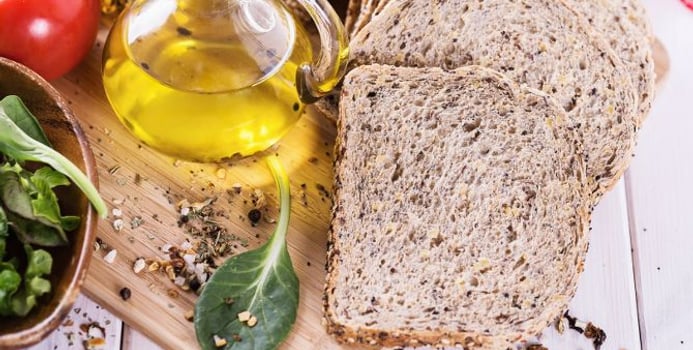In grocery store aisles there are a multitude of grain products that say "multigrain" or "whole grain" on the packages. What do those labels mean exactly? Is one type better than the other one? How can tell the difference? Does it even really matter?
What Is Multigrain?
Multigrain products are made from refined grains. When grains go through the refining process they lose almost all of the germ and bran (where most of the nutritional values is) and are left with mostly endosperm. The endosperm is the least nutritious part of grain. Multigrain products also have things such as food coloring added to them to make them look like they are made from whole grain.
What Is Whole Grain?
Whole grain means that all of the grain from the bran to the endosperm to the germ is used in the manufactured process. The bran and germ are where most of the nutrients reside in whole grain. Mutligrain products lose these healthiest parts of grains during their refining process.
There are a few foods that are always good sources of whole grain. The following list are some foods that are guaranteed to be whole grain.
- Brown rice
- Bulgar wheat
- Oatmeal
- Popcorn
- Quinoa
The Difference
Ingredients are listed in proportional order so that the ingredients that are most used are listed first. Look for the word "whole" as in whole wheat or whole grain. Completely disregard the misleading words such as "stone-ground" or even "100% wheat" that are often on multigrain labels.
Nutritional Differences
Multigrain products go through a refining process that strips most of the nutritional value from the grain. Conversely, whole grain products are not put through a refining process so they contain all the nutrients and vitamins that nature intended. By the way, it would seem logical that manufacturers could just add back the good stuff that is stripped during refining and all would be equal. That is not the case. Although researchers cannot explain why, it is a fact that natural whole grains provide healthy nutrition that cannot be duplicated in manufacturing.
Which Is Better?
To get the healthiest benefits and get your quota of three whole grain servings per day, choose whole grain over multigrain. There is no way to know what a particular manufacturer means when they say "multigrain". They can claim that something is multigrain when in fact it is made mostly from extremely refined white flour with perhaps a tiny amount of some whole grains.
Everyone needs healthy whole grains in their diet. The current dietary guidleines say we need three servings daily of whole grain. This means that at least half of the grain you consume should be whole grain in order to make your daily grain goal. What is the easiest way to know you are eating whole grain? Look for the Whole Grain Council stamp which means that your product was indeed made with truly healthy whole grain and not "multigrain".



